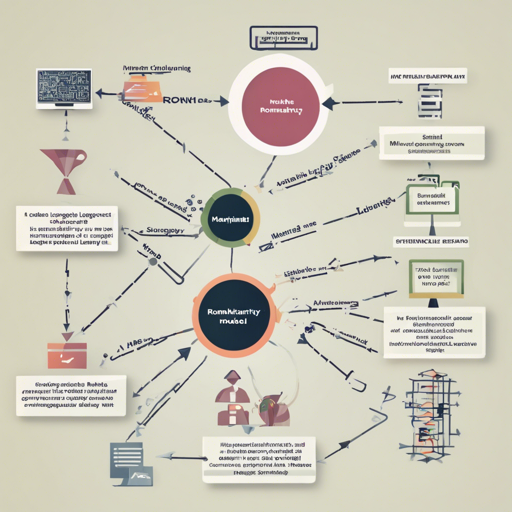The ronankiml_mpnet_768_MNR_10 model is a powerful tool that helps in mapping sentences and paragraphs into a 768-dimensional dense vector space, enabling tasks such as clustering and semantic search. In this guide, we will explore how to effectively utilize this model, both via the Sentence-Transformers library and the HuggingFace Transformers library.
Getting Started with Sentence-Transformers
To use the Sentence-Transformers library, you first need to install it. Here’s how:
- Open your command line or terminal.
- Run the following command:
pip install -U sentence-transformersUsing the Model with Sentence-Transformers
Once the library is installed, you can begin using the model as follows:
from sentence_transformers import SentenceTransformer
sentences = ["This is an example sentence.", "Each sentence is converted."]
model = SentenceTransformer('ronankiml_mpnet_768_MNR_10')
embeddings = model.encode(sentences)
print(embeddings)Using the Model with HuggingFace Transformers
If you prefer to work without the Sentence-Transformers library, you can follow this method:
from transformers import AutoTokenizer, AutoModel
import torch
# Define mean pooling function
def mean_pooling(model_output, attention_mask):
token_embeddings = model_output[0] # Get all token embeddings
input_mask_expanded = attention_mask.unsqueeze(-1).expand(token_embeddings.size()).float()
return torch.sum(token_embeddings * input_mask_expanded, 1) / torch.clamp(input_mask_expanded.sum(1), min=1e-9)
# Sentences to encode
sentences = ["This is an example sentence.", "Each sentence is converted."]
# Load model from HuggingFace Hub
tokenizer = AutoTokenizer.from_pretrained('ronankiml_mpnet_768_MNR_10')
model = AutoModel.from_pretrained('ronankiml_mpnet_768_MNR_10')
# Tokenize sentences
encoded_input = tokenizer(sentences, padding=True, truncation=True, return_tensors='pt')
# Compute token embeddings
with torch.no_grad():
model_output = model(**encoded_input)
# Perform mean pooling
sentence_embeddings = mean_pooling(model_output, encoded_input['attention_mask'])
print("Sentence embeddings:")
print(sentence_embeddings)Understanding the Code: An Analogy
Think of the model like a translator at a airport. When passengers (sentences) arrive, the translator takes them, translates them into a new dialect (dense vector space), and groups those who speak similar languages together (clustering). The process of tokenization is akin to the translator “labeling” key phrases and terms in the sentences so they can convey accurate meaning in the destination language.
Troubleshooting Tips
Should you encounter any issues while using the model, consider the following troubleshooting ideas:
- Installation Issues: If the Sentence-Transformers library doesn’t install correctly, ensure you’re using an updated version of pip by running
pip install --upgrade pip. - Import Errors: Make sure you have correctly installed the libraries mentioned. A missing import could halt your progress!
- Model Loading Errors: Double-check the model name for typos. It will not function if the name does not precisely match.
For more insights, updates, or to collaborate on AI development projects, stay connected with fxis.ai.
Model Evaluation
To see how well the model performs, you can check out the Sentence Embeddings Benchmark. This automated evaluation gives you an overview of the model’s capabilities and how it stands against others.
Model Training Overview
Upon training, specific parameters were set for optimal performance, including:
- DataLoader: Utilized the
NoDuplicatesDataLoaderfor efficient dataset handling. - Loss Function: Employed
MultipleNegativesRankingLossto enhance model understanding of semantic similarities. - Training Duration: Spent 5 epochs optimizing the model.
- Learning Rate: Set at
2e-05for stable convergence.
Conclusion
With the instructions above, you are now equipped to leverage the power of the ronankiml_mpnet_768_MNR_10 model. Dive into the world of sentence similarity and utilize advanced embedding techniques to enhance your projects and research.
At fxis.ai, we believe that such advancements are crucial for the future of AI, as they enable more comprehensive and effective solutions. Our team is continually exploring new methodologies to push the envelope in artificial intelligence, ensuring that our clients benefit from the latest technological innovations.

